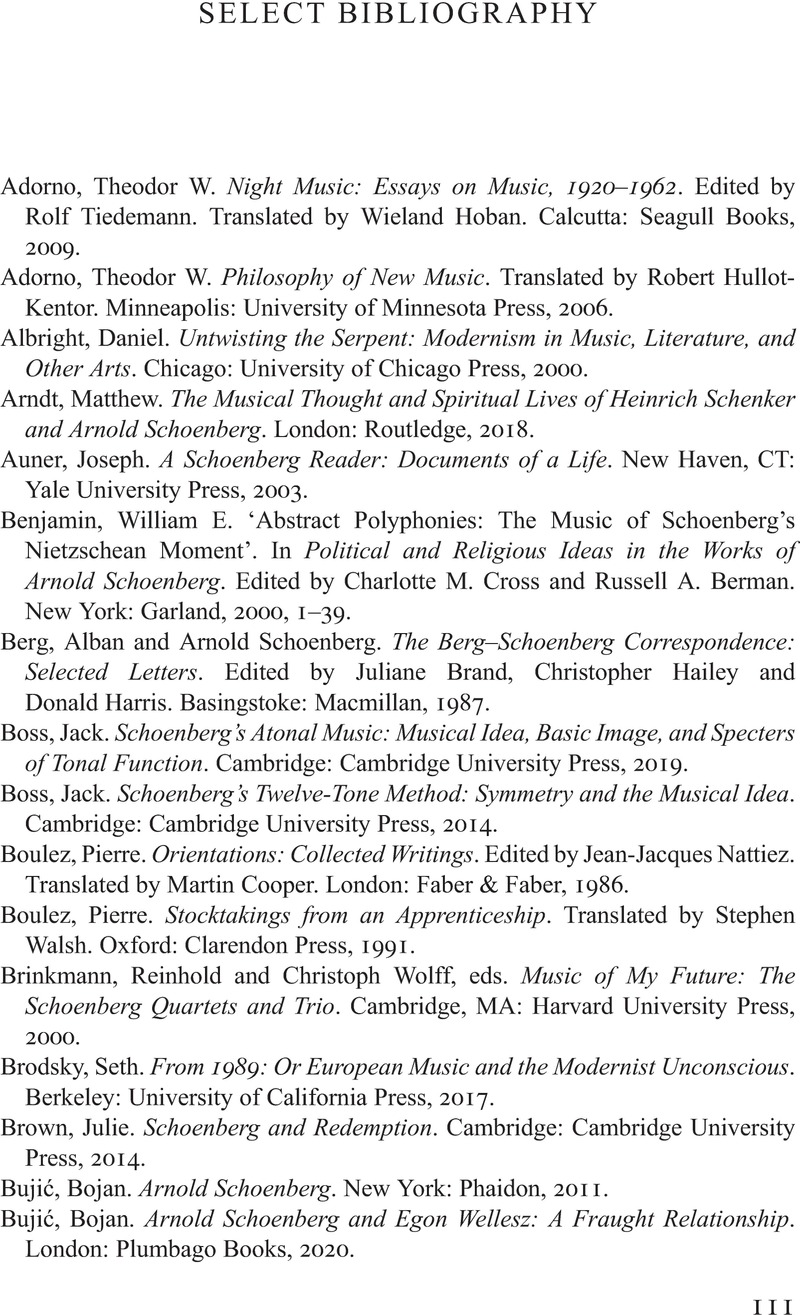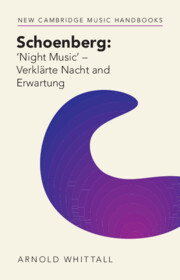Book contents
- Schoenberg: ‘Night Music’, Verklärte Nacht and Erwartung
- New Cambridge Music Handbooks
- Schoenberg: ‘Night Music’, Verklärte Nacht and Erwartung
- Copyright page
- Contents
- Musical Examples
- 1 Prelude
- 2 Verklärte Nacht
- 3 Before Erwartung
- 4 Erwartung
- 5 After Erwartung
- Select Bibliography
- Index of Works by Schoenberg
- General Index
- References
Select Bibliography
Published online by Cambridge University Press: 30 November 2023
- Schoenberg: ‘Night Music’, Verklärte Nacht and Erwartung
- New Cambridge Music Handbooks
- Schoenberg: ‘Night Music’, Verklärte Nacht and Erwartung
- Copyright page
- Contents
- Musical Examples
- 1 Prelude
- 2 Verklärte Nacht
- 3 Before Erwartung
- 4 Erwartung
- 5 After Erwartung
- Select Bibliography
- Index of Works by Schoenberg
- General Index
- References
Summary

- Type
- Chapter
- Information
- Schoenberg: ‘Night Music' – Verklärte Nacht and Erwartung , pp. 111 - 114Publisher: Cambridge University PressPrint publication year: 2023



